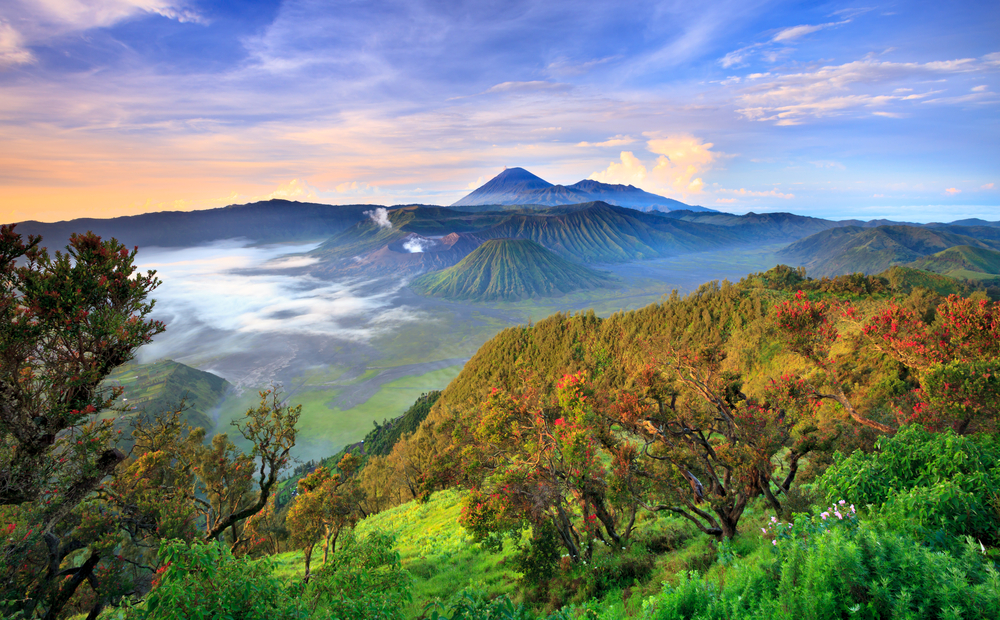Belonging to the smaller islands of the Malay archipelago in terms of area, the island of Java, which belongs to Indonesia , attracts hundreds of thousands of visitors from all over the world every year. While the west of the island is entirely geared towards tourists, the east welcomes its visitors with numerous natural spectacles. You can now get to know the special highlights of the spot between Bali and Sumatra.
Highly recommended: A visit to Jakarta
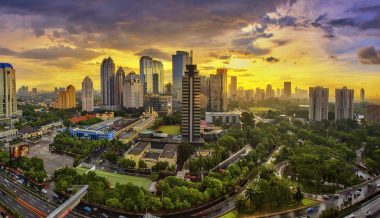
The largest city in Southeast Asia is Jakarta. With ten million inhabitants, Java’s largest city is also the capital of Indonesia. The metropolis is located on the bay of Jakarta and invites visitors to explore the numerous sights. One of them is the Monumen Nasional.
Simply huge – The Monas
One of the most popular photo motifs in the Indonesian capital Jakarta is the national monument. The work of art, called Monas, is a tower over 130 meters high that towers over Independence Square and is crowned by a 35-kilogram gold flame. At 115 meters there is a viewing platform from which you can let your gaze wander over large parts of the city. You will get an impression of what a huge city Jakarta really is.
Indonesia in miniature – The Taman Mini Indonesia Indah Park
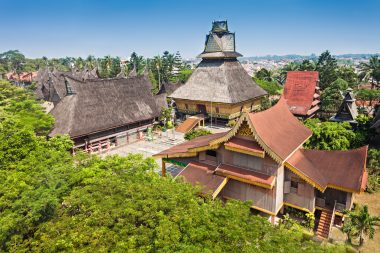
If you want to know what Indonesia’s rich cultural and architectural landscape has to offer, you should make a detour to Taman Mini Indonesia Indah. Here are scale replicas of Indonesian houses. Inside are household items, tools of the trade and other everyday items that reflect Indonesian everyday life. The almost 100-hectare park was opened in 1975 and is located in the southeast of the Indonesian capital.
Real sea gem – Kepulauan Seribu
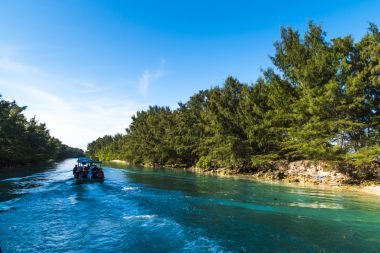
From Jakarta’s marina, boats depart daily for the “Archipelago of the Thousand Islands”. Kepulauan Seribu – the Indonesian name – is located in the bay of Jakarta and awaits its visitors with a dolphinarium, among other things. Several shows take place here every day. The main animal actors are dolphins, sea lions, seals and co. A boat rental, restaurants and various shops round off a successful family outing.
Pure nature – East Java
The east of Java convinces above all with various natural highlights. These include volcanoes, open savannahs and expansive, picturesque beaches.
Wild beauty – Bromo-Tengger-Semeru National Park
Since the 1980s, Java has been home to one of the most beautiful national parks in the world. The Bromo-Tengger-Semeru owes its name to the two volcanoes Bromo and Semeru as well as to the Tengger people living here. With its unique flora and fauna, the park is one of the highlights of your visit to Java. In the park, for example, you will encounter rhinoceros birds, java monkeys, red dogs and other animals that can only be found on the island.
Popular and dangerous – The Bromo, the Semeru and the Tumpak Sewu waterfall
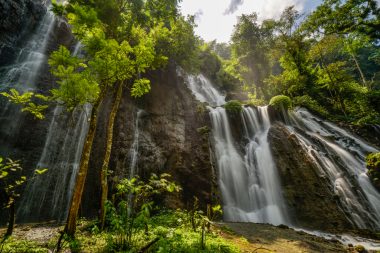
Bromo-Tengger-Semeru National Park is home to one of Indonesia’s youngest volcanoes. The Bromo measures an altitude of 2329 meters. Today it is considered a popular motif for holiday photos. It is worth noting, however, that bromo is still active today. The same applies to the Semeru. It is located directly behind the Bromo and emits eruptions almost every hour. 3676 meters high and a crater diameter of almost 500 meters make it one of the largest and most beautiful volcanoes in the world. It will also be particularly spectacular in the Lumajang region. Here you will find the 120-meter-high Tumpak Sewu waterfall. The name translates as “a thousand waterfalls”. A visit there will always remain in their memory,
Simply idyllic – East Java’s dream beaches
If you spend the most beautiful time of the year on Java, you naturally want to relax. The best way to do this is on one of the beautiful beaches in the east of the island. One of the most popular is the Sukamade Turtle Beach near Pulau Merah. Here, however, visitors not only have the opportunity to refresh themselves or ride one or the other perfect wave. Between November and March, a very special spectacle takes place here. Giant turtles gather there annually and lay their eggs. Four to six weeks later, the offspring sets off on the arduous journey into the sea.
Brown Gold – Coffee and East Java
In addition to tourism, there is another economic sector on Java. It is not only in the hinterland that there are numerous coffee plantations. The island owes this mainly to the Lower Countries, who had occupied Indonesia for a long time. Today, a visit to such a plantation is not only worthwhile for coffee fans. Here you will learn more about the history of the “brown gold” and its elaborate production. One of these plantations with an attached coffee factory is located in Gumitir.
Art, History and Theme Parks – The West of Java
Of course, the west of Java also has a lot to offer. For example, the Museum of Geology is located here. In the city of Bandung, you can learn more about Java’s distant past and run into a mammoth skeleton, for example. In the botanical garden of Bogor you will get another impression of the unique flora of the island. The NuArt Sculpture Park in Badung is a must-see for all art lovers. Also in Badung is the Dusun Bambu Family Leisure Park. In the complex you have the opportunity to experience an unforgettable family outing with fun and games.
Of course, the Indonesian island has more to offer. See for yourself on your holiday in Java.
Facts about Java
- Population density: Java is the world’s most densely populated island. It is home to more than 140 million people, which is about 57% of Indonesia’s total population.
- Capital: Jakarta, the capital of Indonesia, is located on the island of Java and is the largest city in Southeast Asia.
- Volcanic activity: The island is known for its volcanic activity. It is home to several active volcanoes, including the famous Merapi.
- Agriculture: Java is an important center for agriculture in Indonesia and produces a variety of crops, including rice, tea, and coffee.
- History: Java has a rich history and culture, including ancient Hindu and Buddhist temples such as Borobudur and Prambanan. The island was also an important place for the spread of Islam in Southeast Asia.
- Language: There are several dialects and languages spoken in Java, including Javanese, Sundanese, and Betawi. Indonesian, the official language of Indonesia, is also widely spoken.
- Ecology: Despite its dense population, Java is home to a variety of ecosystems, from rainforests to mangroves and coral reefs. It is also home to many endemic species.
- Economy: Java is the economic center of Indonesia. Much of the country’s industry, including textiles, automotive manufacturing, and electronics, is located here.
- Education: Java is also home to the country’s most prestigious universities, including Universitas Indonesia and the Bandung Institute of Technology.
- Java in Literature: Java has a rich literary tradition, and modern Indonesian literature often has its roots in the island’s narrative traditions.
National Parks in Java
Java is home to several national parks that are home to an amazing variety of flora and fauna. Here are some of the most notable national parks:
- Ujung Kulon National Park: Located on the westernmost tip of Java, this park is the last natural habitat of the Javan rhinoceros, one of the rarest rhinoceros species in the world.
- Bromo-Tengger-Semeru National Park: Named after the two active volcanoes Bromo and Semeru, this park is known for its stunning scenery, including the so-called “Sea of Sand,” a volcanic cone.
- Baluran National Park: Also known as the “Africa of Java”, this park is home to a variety of ecosystems, from savannahs and mangroves to evergreen and monsoon-induced forests.
- Meru Betiri National Park: This park is known for its sea turtles, including the critically endangered leatherback turtle, and for its dense rainforest.
- Gunung Halimun Salak National Park: This is the largest protected area of West Java, known for its cloud forest and endemic wildlife.
- Alas Purwo National Park: This park is located on the easternmost tip of Java and is a sacred place for the Javanese people. It is home to savannahs, mangroves and some of the best surf spots in Indonesia.
- Gunung Gede Pangrango National Park: The park is famous for its two volcanoes, Gunung Gede and Gunung Pangrango, and the rich biodiversity, including the Javan leopard and the silver-leaf monkey.
- Karimunjawa National Park: Although it consists mainly of a group of islands north of Java, it belongs politically and geographically to Java. The park is famous for its coral reefs and a variety of marine life.


